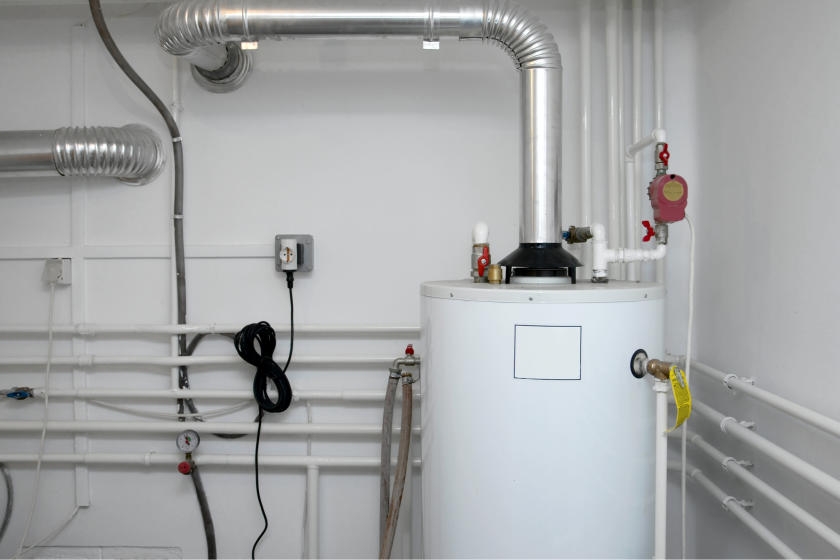Steps to Prolong the Life of Your Home's Hot Water System Through Maintenance
Steps to Prolong the Life of Your Home's Hot Water System Through Maintenance
Blog Article
Were you trying to locate answers about How to Maintain Your Water Heater & Prolong its Life?

Warm water is vital for daily convenience, whether it's for a revitalizing shower or cleaning meals. To ensure your hot water system runs efficiently and lasts much longer, normal maintenance is essential. This post provides functional pointers and insights on exactly how to maintain your home's hot water system to prevent interruptions and pricey repair work.
Intro
Maintaining your home's hot water system may seem challenging, however with a couple of simple steps, you can guarantee it operates smoothly for many years to come. This guide covers whatever from recognizing your hot water system to DIY upkeep tips and understanding when to employ professional assistance.
Importance of Keeping Your Warm Water System
Regular maintenance not just prolongs the life expectancy of your warm water system however additionally ensures it runs successfully. Neglecting maintenance can lead to reduced effectiveness, greater power bills, and even premature failing of the system.
Signs Your Hot Water System Needs Maintenance
Understanding when your hot water system needs interest can prevent major issues. Look out for indications such as inconsistent water temperature level, odd sounds from the heater, or rustic water.
Flushing the Water Heater
Flushing your water heater removes sediment accumulation, enhancing effectiveness and extending its life.
Checking and Replacing Anode Rods
Anode rods prevent corrosion inside the storage tank. Examining and replacing them when worn out is essential.
Complex Issues Calling For Specialist Help
Instances include significant leaks, electrical problems, or if your water heater is consistently underperforming.
Regular Specialist Maintenance Perks
Professional maintenance can consist of comprehensive inspections, tune-ups, and ensuring conformity with security requirements.
Inspecting and Changing Temperature Setups
Readjusting the temperature setups makes certain ideal performance and safety.
Do It Yourself Tips for Upkeep
You can carry out several upkeep tasks on your own to maintain your warm water system in top problem.
Checking for Leaks
Consistently check pipes and links for leakages, as these can cause water damage and greater bills.
Recognizing Your Hot Water System
Prior to diving into maintenance jobs, it's practical to understand the standard elements of your warm water system. Normally, this includes the hot water heater itself, pipelines, anode rods, and temperature level controls.
Regular Monthly Upkeep Tasks
Routine monthly checks can aid capture minor problems prior to they intensify.
Examining Pressure Alleviation Valves
Evaluating the pressure safety valve guarantees it functions appropriately and avoids excessive stress buildup.
Shielding Pipes
Protecting warm water pipes minimizes heat loss and can conserve power.
When to Call a Professional
While DIY upkeep is advantageous, some problems call for professional know-how.
Conclusion
Normal maintenance of your home's hot water system is necessary for performance, longevity, and expense financial savings. By adhering to these suggestions and recognizing when to look for professional help, you can make sure a reliable supply of hot water without unanticipated disruptions.
How to Maintain an Instant Hot Water Heater
Before tinkering with your hot water heater, make sure that it’s not powered on. You also have to turn off the main circuit breaker and shut off the main gas line to prevent accidents. Also turn off the water valves connected to your unit to prevent water from flowing into and out of the appliance. 2. When you’re done, you have to detach the purge valves’ caps. These look like the letter “T†and are situated on either side of the water valves. Doing so will release any pressure that has accumulated inside the valves while at the same time avoid hot water from shooting out and burning your skin. 3. When the purge valves’ caps are removed, you have to connect your hosing lines to the valves. Your unit should have come with three hoses but if it didn’t, you can purchase these things from any hardware or home repair shops. You can also get them from retail stores that sell water heating systems. Read the user’s manual and follow it to complete this task properly. When the hosing lines are connected, open the purge port’s valves. 4. You should never use harsh chemical cleaners or solutions when cleaning your unit. Make use of white vinegar instead. It should be undiluted and you’ll probably use about 2 gallons. 5. Now flush your water heater. This task should probably take about 40 minutes. We can’t give you specific directions for this because the procedure is carried out depending on the type, model and brand of your heater. With that being said, refer to the user’s manual. 6. When you’re done draining the unit, you have to turn off the purge port valves again. Remove the hosing lines that you earlier installed on each of the water valves. Put the valve caps (purge port) back in their respective places and be very careful so as not to damage the rubber discs that are found inside these caps. 7. Now that everything’s back in place, check your user’s manual again to find out how to reactivate your water heating system. 8. Once it is working, turn one of your hot water faucets on just to let air pass through the heater’s water supply pipes. Leave the tap on until water flows smoothly out of it. https://www.orrplumbing.com/blog/2014/september/how-to-maintain-an-instant-hot-water-heater/

Do you really like more info about Tips on Maintaining a Water Heater? Post feedback further down. We will be glad to listen to your opinions about this entry. In hopes to see you back again later on. Make sure you set aside a second to promote this entry if you liked it. I recognize the value of your readership.
Get A Free Estimate Report this page